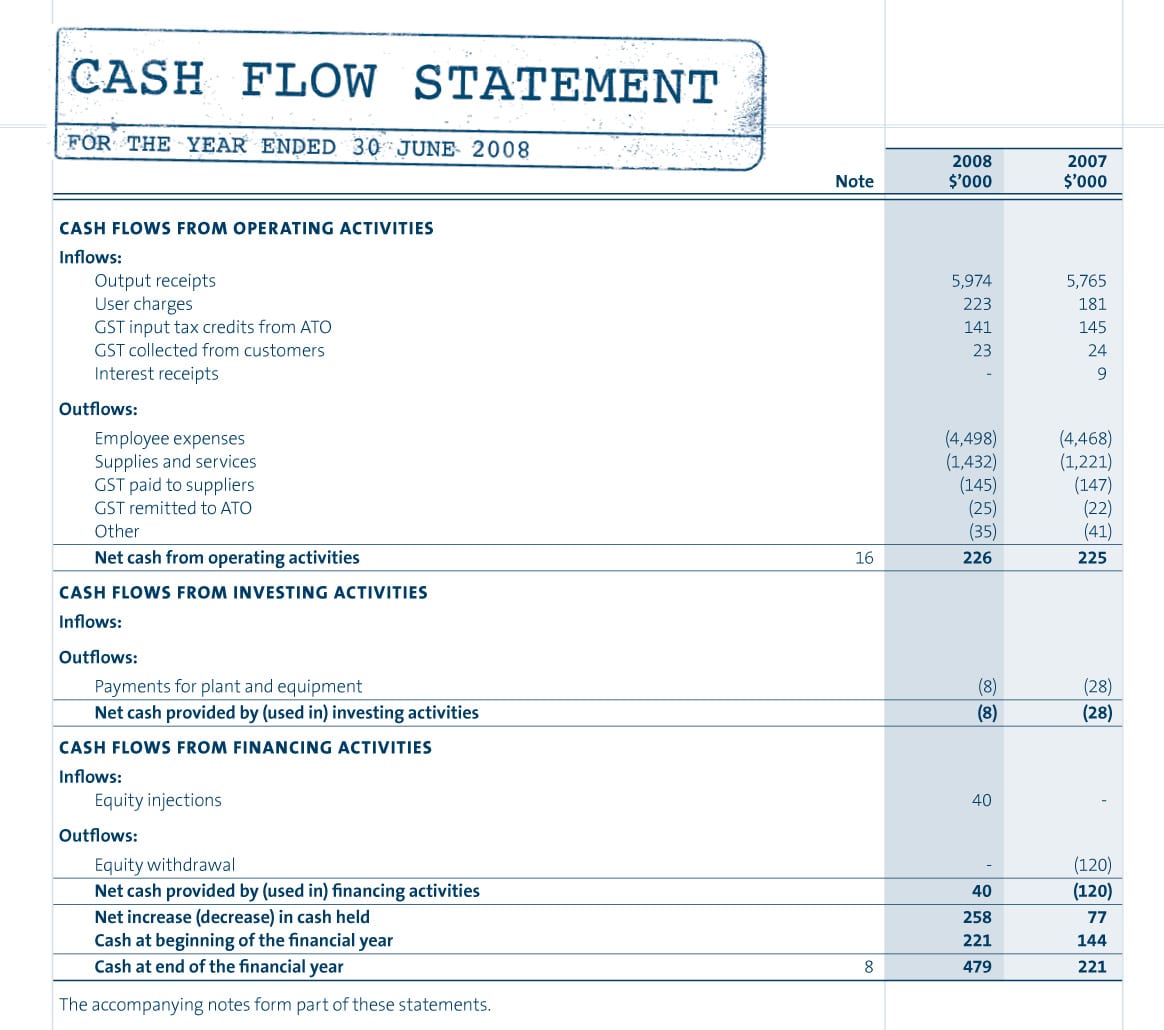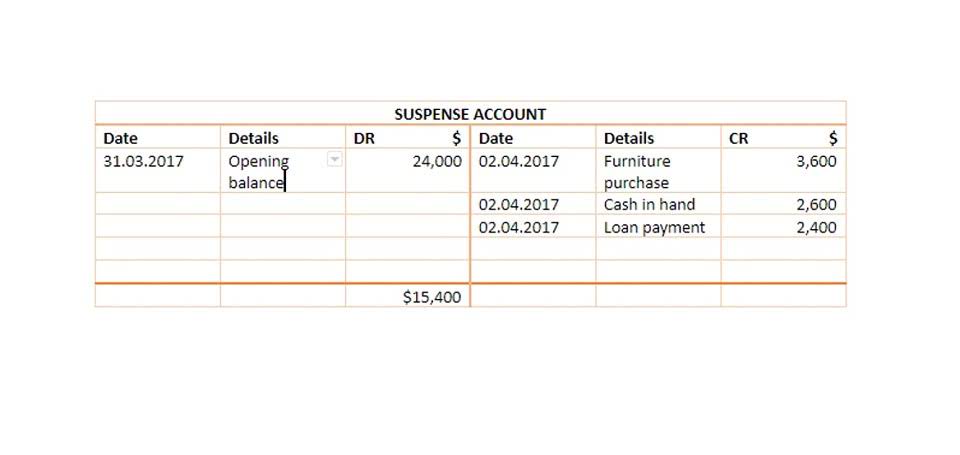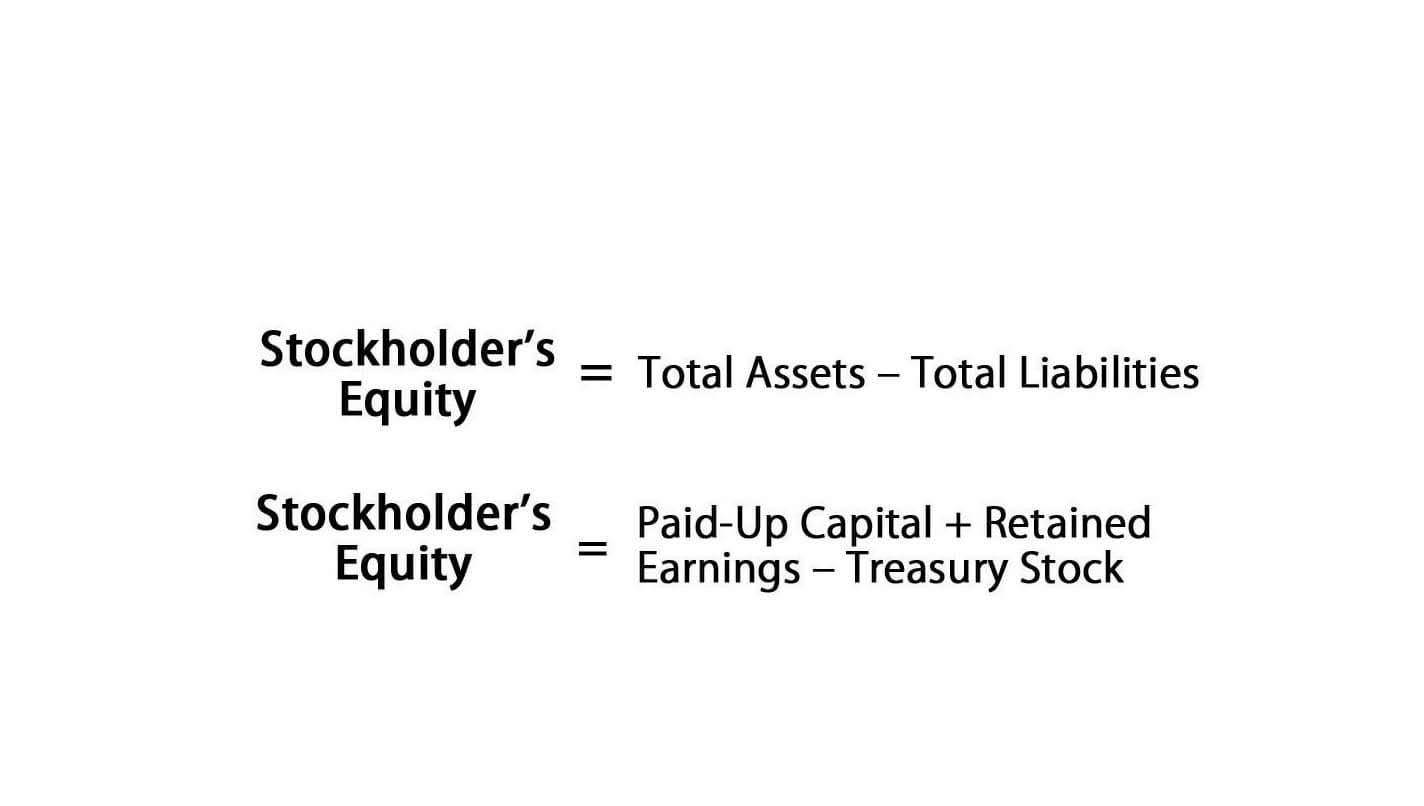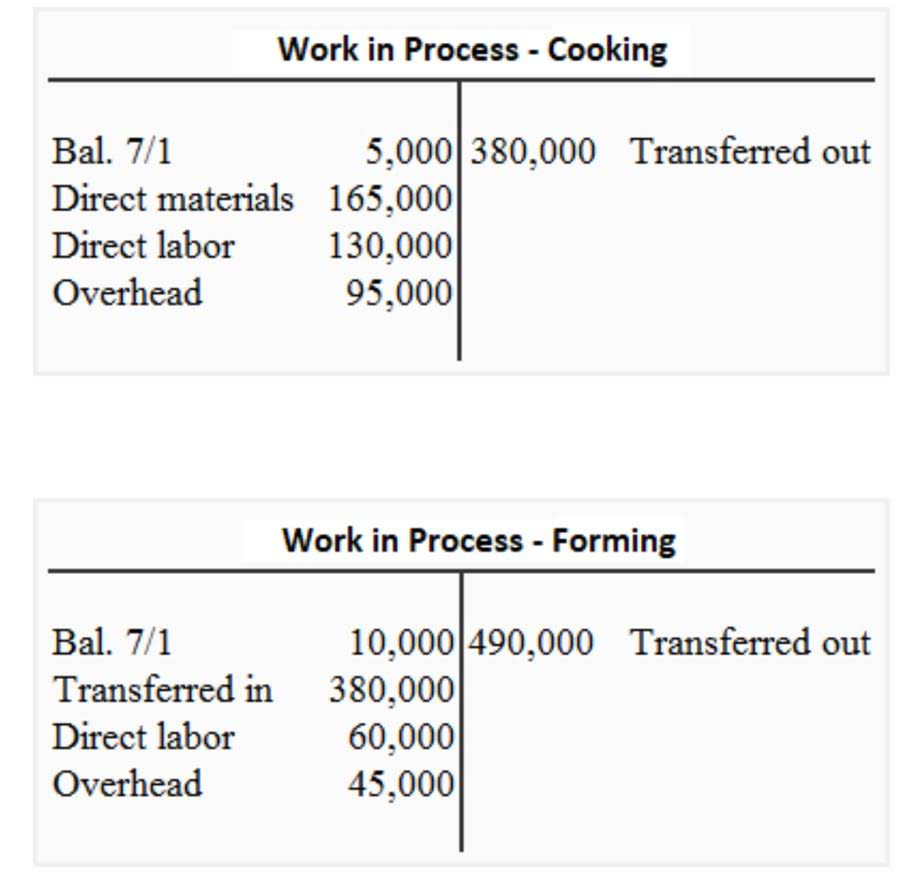current portion of long-term debt definition and meaning

The current portion of long-term debt (CPLTD) is the amount of unpaid principal from long-term debt that has accrued in a company’s normal operating cycle (typically less than 12 months). It is considered a current liability because it has to be paid within that period. This line item is closely followed by creditors, lenders, and investors, who want to know if a company has sufficient liquidity to pay off its short-term obligations. If there do not appear to be a sufficient amount of current assets to pay off short-term obligations, creditors and lenders may cut off credit, and investors may sell their shares in the company. The short/current long-term debt is a separate line item on a balance sheet account.
Key Aspects of the Current Portion of Long-Term Debt (CPLTD):
However, the old acid-test ratio suffers from the same flaw as the old current ratio—it erroneously suggests that CPLTD, included as a current liability, is repaid by the current (acid) assets. The principal portion of an obligation that must be paid within one year of the balance sheet date. For example, if a company has a bank loan of $50,000 that requires monthly interest and principal payments, the next 12 monthly principal payments will be the current portion of the long-term debt. That amount is reported as a current liability and the remaining principal amount is reported as a long-term liability.
How is CPLTD different from long-term debt?
The liabilities of a balance sheet are broken into Current Liabilities and Noncurrent Liabilities. Current Liabilities are the debts that will be paid during the coming 12 months, and Noncurrent Liabilites are debts that will be paid in longer than 12 months. One unique type of liability though would be installment loans that may be paid in 3, 5 or 20 years. The majority of the loan will not be repaid in the next 12 months, but a small portion of the principal will as the borrower makes monthly P&I payments.
CREDIT CARDS

Notice that CPLTD appears in both the measure for the repayment of short-term debt—the current ratio—and the measure for the repayment of long-term debt—the DSCR. That is because the traditional current ratio encompasses both cycles, including both short-term liabilities and the current portion of long-term liabilities. To illustrate how businesses record long-term debts, envision a business takes out a $100,000 loan, payable north of a five-year period. Toward the beginning of each tax year, the company moves the portion of the loan due that year to the current liabilities section of the company’s balance sheet. At the beginning of each tax year, the company moves the portion of the loan due that year to the current liabilities section of the company’s balance sheet.
Example of the Current Portion of Long-Term Debt
Below is a break down of subject weightings in the FMVA® financial analyst program. As you can see there is a heavy focus on financial modeling, finance, Excel, business valuation, budgeting/forecasting, PowerPoint presentations, accounting and business strategy. As payments are made, the cash account decreases but the liability side decreases an equivalent amount. The same goes for SeaDrill that has a high number in its current portion of long-term debt and a low cash position.
Current Portion of Long Term Debt on Balance Sheet
It creates financial leverage, which can multiply the returns on investment provided the returns derived from loan exceeds the cost of loan or debt. However, it all depends if the company is utilizing the debt taken from the bank or other financial institution in the right manner. Meanwhile, the current portion of long-term debt should be treated as current liquidity as it represents the principal part of the debt payments, which are expected to be paid within the next twelve months. If not paid within the current twelve months, it gets accumulated and has an adverse impact on the immediate liquidity of the company. As a result, the company’s financial position becomes risky, which is not an encouraging sign for investors and lenders. Conventional accounting reports turbotax and handr block fix irs error delaying stimulus checks to some customers among current liabilities because, logically, it is a liability due in the current period.
- The balance sheet below shows that the CPLTD for ABC Co. as of March 31, 2012, was $5,000.
- In this article, we look at what short/current long-term debt is and how it’s reported on a company’s balance sheet.
- Long-term liabilities incorporate loans or other financial obligations that have a repayment schedule enduring north of a year.
- The same goes for SeaDrill that has a high number in its current portion of long-term debt and a low cash position.
- For example, if a company breaks a covenant in its loan, the lender may reserve the right to call the entire loan due.
For instance, on the off chance that a company owes a total of $100,000, and $20,000 of it is due and must be paid off in the current year, it records $80,000 as long-term debt and $20,000 as CPLTD. Current portion of long-term debt (CPLTD) refers to the section of a company’s balance sheet that records the total amount of long-term debt that must be paid within the current year. For example, if a company owes a total of $100,000, and $20,000 of it is due and must be paid off in the current year, it records $80,000 as long-term debt and $20,000 as CPLTD. CPLTD is the portion of debt a company has that is payable within the next 12 months. It’s presented as a current liability within a balance sheet and is separated from long-term debt. The current portion of long-term debt (CPLTD) refers to the section of a company’s balance sheet that records the total amount of long-term debt that must be paid within the current year.
It outlines the total amount of debt that must be paid within the current year—within the next 12 months. Both creditors and investors use this item to determine whether a company is liquid enough to pay off its short-term obligations. Creditors and investors will examine a company’s CPLTD to identify it’s ability to pay short-term obligations. A company will either use it’s cash flow or current assets to pay these short-term obligations, so CPLTD is helpful when projecting a company’s future financial performance. There is, of course, a business risk that revenue could fall short of break-even.
This situation may not be sustainable and may suggest that the mix of short-term and long-term debt is not optimal. Only by using the measures together is a more comprehensive understanding of liquidity possible. In summary, the Current Portion of Long-Term Debt (CPLTD) is the part of a company’s long-term debt that is due within the next 12 months. It is a key component of current liabilities on the balance sheet and plays a crucial role in assessing a company’s short-term financial obligations, liquidity, and overall debt management strategy. Properly managing CPLTD is essential for maintaining financial stability and ensuring that a company can meet its debt obligations without jeopardizing its operations. The current period ratio (Solution 2) is therefore the closer substitute for the old current ratio.
Chartered accountant Michael Brown is the founder and CEO of Double Entry Bookkeeping. He has worked as an accountant and consultant for more than 25 years and has built financial models for all types of industries. He has been the CFO or controller of both small and medium sized companies and has run small businesses of his own. He has been a manager and an auditor with Deloitte, a big 4 accountancy firm, and holds a degree from Loughborough University. The current portion of this long-term debt is $1,000,000 (excluding interest payments).
- Publicado en Bookkeeping
Net Cash Flow NCF Formula + Calculator

FCFF is a hypothetical measure of the free cash that the company would have available if it had no debt. Net cash flow refers to either the gain or loss of funds over a period (after all debts have been paid). When a business has a surplus of cash after paying all its operating costs, it is said to have a positive cash flow.
The value of your idea increases the further you take it down the development path; however, moving along that path requires the innovator’s time and efforts as well as the investor’s money. When it is desired to make a comparison between different options, then the revenue and oil price will be the same for all the alternatives. In this case, the revenue can be eliminated and the comparison between the alternatives can be made from a strictly cost point of view and the lowest cost will be the best alternative. The operating expense (OPEX) can be calculated with other expenses every year. A cash flow diagram can be used to calculate the net present value, or other economic tools can be used. The net present value is calculated using the following equation; note that it can be calculated easily using an Excel spreadsheet.
What is included in net cash flow?
These are the general types to consider and the types are different from one country to another. The cost will also vary, as it depends on the country’s laws and regulations. Operating expense (OPEX), which refers to the direct expense during operations, such as the cost of the workover or other activities, has a direct impact on the production. The indirect expenses include management salaries, computers, desks, and other usable equipment during project implementation. Where n is the project lifetime in years; D is the discount rate, which is approximately equal to the interest rate value; and NCF is the net cash flow per year. The cash flow of each activity is calculated separately first, and then the balance of the three parts is added to form NCF.

While the net cash flow formula tells you how much operating cash moves in and out for a given period of time, net income also includes all expenses. Net income subtracts both operating expenses and non-operating expenses, such as taxes, depreciation, amortization, and others. The annual return may be the gross income, net pre-tax income, net after-tax income, cash flow, or profit. ncf formula These may be calculated for one particular year or as an average over the project life. Investment may be the original total investment, depreciated book-value investment, lifetime average investment, fixed capital investment, or equity investment. The investment includes working capital and sometimes capitalized expenses such as interest on capital during construction.
Cash Flow from Operations Calculation Example
Cash flows from investing activities include the purchase and sale of the company’s assets and funds paid for long-term investments. Another limitation of NCF is that even if a business makes a capital investment that’ll bring a substantial return on investment in the future, the NCF would still show negative for the specific time period. The most common way to calculate operating cash flow is through the indirect method, which takes into account the net income under an accrual basis of accounting. Repeated periods of positive net cash flow are a good sign that your business is ready to expand, whereas repeated periods of negative net cash flow can be a sign that your business is struggling. In order to calculate net cash, you must first add up all cash (not credit) receipts for a period. This amount is often referred to as «gross cash.» Once totaled, cash outflows paid out for obligations and liabilities are deducted from gross cash; the difference is net cash.
On the other hand, a business that generates a negative net cash flow, month after month, may be encountering financial or operational issues. Learning how to find net cash flow can be a great way to gain insight into the financial health of your business. Enter the cash flow from operations, cash flow from investing, and cash flow from financing.
How to calculate Net Cash Flow (NCF) :
Therefore, depreciation of the resource at any time is the net cash flow minus two terms. The other is the sum of the returns to the two assets (which is equal to the return on the remaining project value and consequently is unique). Net cash flow is normally calculated for uniform time intervals – quarterly or half-yearly. Similar to the current ratio, net cash is a measure of a company’s liquidity—or its ability to quickly meet its financial obligations. A company’s financial obligations can include standard operating costs, payments on debts, or investment activities.

The allocation has the properties of a rental rate applied to the accounting balance in that it is equal to the sum of interest on and depreciation of the remaining (undepreciated, present) value of the user costs of the asset. The negative of the change of the value over any period is defined to be the depreciation of the project in that period. First, the current net cash flow in the period is realized and is removed from any projection of future, remaining value.
NCF can help you identify issues with operating cash flow early so that your total cash outflows stay within your total cash inflows. Net cash flow measures the impact that changes in operating cash flow or investing activities have on your company’s finances. It provides valuable insight into expenditures and earnings, which will help you assess your operations’ overall efficiency.
- Publicado en Bookkeeping
Bookkeeper Job Description

The customer lets the bookkeeper know when they’ve been paid, we enter that payment in QuickBooks Online, and then we create a deposit to match what the client takes to the bank. Bookkeepers might also have to manually add any transactions that aren’t included in the bank feed. The transactions that need to be added will most likely be transactions generated bookkeeping and payroll services outside of the accounting system, such as cash payments or handwritten checks. It could also involve matching deposits as customer payments to help manage accounts receivable or outgoing transactions as payments against vendor bills. The accounting software, depending on how effective it is, should be able to automatically categorize certain transactions.
What is bookkeeping?
- Small businesses and sole proprietorships require bookkeepers to manage their general ledger, chart of accounts, and adhere to local legal requirements.
- Accountants might take this a step further by registering as a CPA, or Certified Public Accountant.
- There are plenty of opportunities for career advancement in this field.
- Think about it, learning how to record financial transactions, balance your books, and generate financial documents is a lot of work.
- Employers in areas with higher living costs also tend to pay a premium.
- While it is less expensive, it does run the risk of errors in calculations and withholdings.
- One final stage in payroll accounting is to do a payroll reconciliation.
There’s always a demand for experienced, efficient bookkeepers in nearly every industry. Companies often outsource the organization of their finances to independent professionals, then hire accountants for more complex issues and tax filing. We’ll also touch upon their collaboration with other financial professionals, such as certified public accountants, to ensure seamless tax compliance and reporting.
Set the Process Up
- You know what a bookkeeper does and what their day-to-day responsibilities look like.
- Each complements the other in ways that contribute to the overall financial health of the organization.
- Knowing the right forms and documents to claim each credit and deduction is daunting.
- If you’re organized and enjoy working with numbers, a job as a bookkeeper could be a good fit.
- Become a Bookkeeper through Penn Foster’s accredited online school.
- Wave has helped over 2 million North American small business owners take control of their finances.
When selecting a bookkeeping style, business owners have several options. Learn how QuickBooks Live Expert Assisted can help you streamline your bookkeeping and free up time spent on finances. You might need only some or all of these services that can be part of the job of a bookkeeper. How your business operates is unique, and your bookkeeping follows suit. A CIA is an accountant who has been certified in conducting internal audits.

Why Is Bookkeeping Important?
- There are several effective ways to manage bookkeeping responsibilities in-house or externally by using helpful tools and technologies.
- Take our free career test to find out if bookkeeper is one of your top career matches.
- Much of that manual data entry can now be left to automated systems.
- It’s important to regularly reconcile your accounts to avoid overdraft fees, fraudulent charges, or incorrectly recorded transactions.
- Not only is QuickBooks the dominant small business accounting software on the market today, but it also offers supplementary products to augment your overall QuickBooks experience.
- Many bookkeeping software options automate the tracking process to eliminate errors.
Both accounting and bookkeeping play an important financial role in business, there is a difference between the two. Bookkeeping is a direct record of all purchases and sales your business conducts, while accounting is a subjective look at what that data means for your business and cash flow strategies. An accountant can be considered a bookkeeper, but a bookkeeper can’t be an accountant without proper certification. Think about it, learning how to record financial transactions, balance your books, and generate financial documents is a lot of work. On top of that, you’ll also be burning through your already limited time if you have to go back and correct a bunch of errors because you were less experienced when you started doing your own books. Instead of putting trust in an individual bookkeeper or hiring a costly large firm, your small business can take advantage of the broad spectrum of services offered by FinancePal.
Before joining the team, she was a Content Producer at Fit Small Business where she served as an editor and strategist covering small business marketing content. She is a former Google Tech Entrepreneur and she holds an MSc in International Marketing from Edinburgh Napier University. According to BLS data from May 2021, the top 10% of bookkeepers earned median base salaries of $61,980 per year. Depending on the employer, bookkeepers may qualify for other forms of compensation, such as performance bonuses.

In September 2022, Payscale placed the national U.S. average rate for bookkeepers at $18.46 per hour. Bookkeepers should research local average rates to ensure they price their services competitively. In terms of cities, the leading destinations for bookkeepers also rank among the largest metro areas in the United States. Notably, Texas has two cities (Dallas and Houston) in the top five employers of bookkeeping, accounting, and auditing clerks among metro areas. Bookkeeping still offers a stable career path that does not demand advanced degrees or extensive training.
In terms of pay, bookkeepers tend to earn the most by working in niche industries. Compared to other major employment sectors for bookkeepers, they host relatively few jobs. As such, candidates should expect a more competitive landscape if applying for available openings. Employers in areas with higher living costs also tend to pay a premium.

Understanding the Evolving Role of Bookkeepers
An accountant may interpret the financial records that a bookkeeper compiles, in order to assess a company’s financial health. Becoming an accountant usually requires more training and education than bookkeeping and can be a good next step in your financial career. The responsibilities of a bookkeeper include a fair bit of data entry and receipt wrangling. They’re responsible for recording every financial transaction in your general ledger using double-entry bookkeeping—usually called recording journal entries. That sounds like a mouthful, but often that just looks like inputting all your transactions into accounting software. QuickBooks is the most popular small business accounting software suite.
- Offers a comprehensive suite of HR tools such as a proactive HR support team, employer/employee training, business advice, and legal assistance from Upnetic Legal Services®2.
- It might feel daunting at first, but the sooner you get a handle on this important step, the sooner you’ll feel secure in your business’s finances.
- Payroll clerks are a specific type of bookkeeper, as managing payroll is an early stage of the accounting process.
- In many instances, an accountant prepares the initial chart, and the bookkeeper references it while recording transactions.
- In September 2022, Payscale placed the national U.S. average rate for bookkeepers at $18.46 per hour.
- Bookkeeping professionals have their own expertise based on the types of businesses and industries they serve.
They then enter the estimates into their QuickBooks Online account and create or progress invoices as the project moves along. Our (non-judgmental) team of bookkeeping, accounting, and payroll experts is standing by to coach you—or do the work for you. Give your customers the option of paying with one click using a credit card, bank transfer, or Apple Pay. An accountant or bookkeeper can be useful set of hands to help with the accounting heavy lifting.
- Publicado en Bookkeeping
The Best Guide to Bookkeeping for Nonprofits: How to Succeed Foundation Group® Studio 21

Manage your finances and see beyond the numbers to make the right moves for your business.
- Nonprofit organizations have a tax-exempt status with the Internal Revenue Service (IRS).
- Our experienced accountants are highly educated and experienced in tax planning and will work hard to make every dollar count.
- Get insights from one central dashboard so you can easily understand the health of your business and make strategic decisions.
- They can choose to hire in-house accountants or outsource their accounting to a specialized firm.
- Complete Small Business Solutions is a professional and reliable nonprofit accounting service provider in Florida.
The end result is a set of accurate financial statements—an income statement and a balance sheet. Bench Accounting is revolutionizing how small businesses in Fort Lauderdale, Florida, manage their bookkeeping and taxation responsibilities. With an array of businesses booming in tourism, catering, fishing, and real estate development, this city requires a unique understanding of different financial landscapes. While Florida doesn’t levy personal income tax, businesses have to navigate a myriad of sales taxes, corporate taxes, and tourism taxes. The experts on the Bench team are continually updated regarding new tax laws and regulations specific to Fort Lauderdale.
Accounting Services of Florida
An in-kind donation or a gift in kind represents a donation of goods or services instead of money for purchasing goods and services. For example, let’s say your nonprofit bookkeeping services fort lauderdale needs a car to run errands for the organization. A generous car dealership gives you a vehicle for free, but that doesn’t mean it wasn’t a transaction!
Our goal is to bring relief to your financial stress, fuel your growth, and add value to your business. I trust no one else with my taxes or accounting needs other than Alpha CPA & Advisors. My entire family can rely on this company with not just our taxes but also our financial needs. I have known my dear Michelle almost 10 years and she has been the best thing that happened to me, has help me with my taxes with professionalism and always trying to get the best for me! Thank you Michelle for all your hard and dedicated work through these years!
K & M Taxes, L.L.C.
Accounting, on the other hand, is using that information to provide a detailed analysis of your finances. Since every nonprofit is different, it’s impossible to say one software is the best – but there are some excellent options. Look for a program that is easy to use, efficient, and available on numerous devices. The selected program should be able to automate everyday tasks and minimize errors. FreshBooks accounting software accomplishes all of these tasks with ease and is an excellent choice depending on your needs. As mentioned, nonprofits have to follow strict rules to justify their financial position and fundraising expenses.

We’ll deliver comprehensive financial statements and assist with budgeting so you always know where your organization’s money is going. CPAs are also eligible to represent clients before https://www.bookstime.com/ the IRS if audit support is required, while a non-CPA accountant is not. Academic background, years in the field and professional reputation all can affect an accountant’s rates.
- Publicado en Bookkeeping
FIFO: The First In First Out Inventory Method Bench Accounting

The valuation method that a company uses can vary across different industries. Below are some of the differences between LIFO and FIFO when considering the valuation of inventory and its impact on COGS and profits. Do you routinely analyze your companies, but don’t look at calculate fifo how they account for their inventory? For many companies, inventory represents a large, if not the largest, portion of their assets.
- To calculate FIFO, multiply the amount of units sold by the cost of your oldest inventory.
- This helps keep inventory fresh and reduces inventory write-offs which increases business profitability.
- Do you routinely analyze your companies, but don’t look at how they account for their inventory?
- It can be easy to lose track of inventory, so adopt a practice of recording each order the day it arrives.
- FIFO is an inventory valuation method that stands for First In, First Out.
- It offers more accurate calculations and it’s much easier to manage than LIFO.
What Is FIFO – First In First Out Method?

During the period of inflation, FIFO will outcome in the lowest estimate of cost of goods sold among the three approaches and even the highest net income. The lifo fifo calculator estimates the remaining value of inventory and cost of goods sold(COGS) by using the FIFO and LIFO method. The product inventory management becomes easy with the assistance of this calculator for first-in-first-out and last-in-last-out. The newer units with a cost of $54 remaining in ending inventory, which has a balance of (130 units X $54), or $7,020. The sum of $6,080 cost of goods sold and $7,020 ending inventory is $13,100, the total inventory cost. FIFO and LIFO produce a different cost per unit sold, and the difference impacts both the balance sheet (inventory account) and the income statement (cost of goods sold).

Why would businesses use last in, first out (LIFO)?

Following the FIFO logic, ShipBob is able to identify shelves that contain items with an expiration date first and always ship the nearest expiring lot date first. For instance, say a candle company buys a batch of 1,000 candles from their supplier at $2 apiece. Several months later, the company buys another batch of 1,000 candles – but this time, the supplier charges $10 for each candle.
- Then, since inflation increases price over time, the ending inventory value will have the bulk of the economic value.
- This is a more practical and efficient approach to the accounting for inventory which is why it is the most common approach adopted.
- Logistically, that grocery store is more likely to try to sell slightly older bananas as opposed to the most recently delivered.
- The COGS for each of the 60 items is $10/unit under the FIFO method because the first goods purchased are the first goods sold.
- Businesses would use the weighted average cost method because it is the simplest of the three accounting methods.
Average cost inventory

If you’re ready to try out a dedicated inventory system, Zoho Inventory is free to start. If you’re a business that has a low volume of sales looking for the most amount of detail, specific inventory tracing has the insight you’ll need. But it requires tracking every cost that goes into each individual piece of inventory. There are three other valuation methods that small businesses typically use.
- Leaving the newer, more expensive inventory for a higher costs environment.
- The First In, First Out FIFO method is a standard accounting practice that assumes that assets are sold in the same order they’re bought.
- The average inventory method usually lands between the LIFO and FIFO method.
- The Last-In, First-Out (LIFO) method assumes that the last or moreunit to arrive in inventory is sold first.
- The other 10 units that are sold have a cost of $15 each and the remaining 90 units in inventory are valued at $15 each or the most recent price paid.
In other words, the older inventory, which was cheaper, would be sold later. In an inflationary environment, the current COGS would be higher under LIFO because the new inventory would be more expensive. As a result, the company would record lower profits or net income payroll for the period. However, the reduced profit or earnings means the company would benefit from a lower tax liability.
- With this method, companies add up the total cost of goods purchased or produced during a specified time.
- However, it is more difficult to calculate and may not be compliant under certain jurisdictions.
- Businesses would use the LIFO method to help them better match their current costs with their revenue.
- Should the company sell the most recent perishable good it receives, the oldest inventory items will likely go bad.
- While the LIFO inventory valuation method is accepted in the United States, it is considered controversial and prohibited by the International Financial Reporting Standards (IFRS).
How to make calculating FIFO easier
Determine the cost of the oldest inventory from that period and multiply that cost by the amount of inventory sold during the period. Let’s say that a new line comes out and XYZ Clothing buys 100 shirts from this new line to put into inventory in its new store. FIFO has several advantages, including being straightforward, intuitive, and reflects the real flow of inventory in most business practices. Many companies choose FIFO as their best practice because it’s regulatory-compliant across many jurisdictions. It can be easy to lose track of inventory, so adopt a practice of recording each order the day it arrives. This makes it easier to accurately account for your inventory and maintain proper FIFO calculations.
- Publicado en Bookkeeping
Bookkeeping Services San Antonio

From cash on hand and earnings reports to tax filings, we are here to handle all your small business bookkeeping needs. We are dedicated to open lines of communication that results in quality decisions and peace of mind. While you concentrate on your business, we are busy exploring the latest tax laws and updates to keep you aware of strategies to avoid any end-of-year surprises. Regardless of your level of knowledge, we are both capable and eager to help your safe passage through the year. Give yourself peace of mind and let our account managers take care of your financial statements.
- We are a trusted business partner, but we are also insightful advisors — Providing solutions to help your business grow.
- Our unique approach blends cutting-edge software with a dedicated, human touch.
- To book a consultation with one of our team members, click the link below, book a time on our calendar, and one of our representatives will reach out to you at the appointed time.
- IRS representation, business valuation, bank financing, and cost segregation are some of the company’s other services.
- A mature business relies on smart strategies, planning in advance, and attention to detail to fulfill its mission’s full potential.
- Specializing in small business accounting, we integrate technology, accounting knowledge, and personal service to make sure your books are balanced and that you have up-to-date financial information.
- It works with business entities and individuals and its certified public accountants handle bookkeeping tasks, including financial statement preparation, transaction categorization, and quarterly income or sales tax processing.
Suzann M. Woodward, CPA is registered with the American Institute of CPAs and Boerne Chamber of Commerce. At Bench in San Antonio, Texas, we strive to make bookkeeping as stress-free as possible for small business owners. Our unique approach blends cutting-edge software with a dedicated, human touch. Our expert bookkeepers understand the complexities of local Texan taxes and San Antonio’s business laws, ensuring your books are always accurate and up to date. Our team eliminates the headaches of daily financial management tasks, freeing up your time to concentrate on running your business. We not only keep track of your expenses, revenues, and deductions but we are ever-ready to provide financial reports, making it a breeze during tax filing seasons.
Full Service Independent Agency
Through planning, we help them take advantage of future income-generating or money-saving opportunities. Guerrero CPA is a San Antonio-based business that offers various services for independent professionals, executives, and business owners, such as bookkeeping which involves making records more organized and accessible. Additionally, the accounting firm offers QuickBooks assistance, covering setup, cleanup, and training. bookkeeping san antonio IRS representation, business valuation, bank financing, and cost segregation are some of the company’s other services. Guerrero CPA is headed by Ed Guerrero, who holds numerous certifications, including Great Plains Certified Accounting Applications Specialist and QuickBooks ProAdvisor. Our client relationships are built on a foundation of integrity, trust, proactive advice, and an immediate response to your needs.
- When you’re closing in on that time of the year, it can feel really overwhelming.
- The full-service firm utilizes different online accounting platforms, such as QuickBooks, FreshBooks, Wave, and Xero.
- The company has staff members who speak Russian, Chinese, and Bulgarian.
- We specialize in fixing current issues, planning for the future, and removing surprises in all areas in your financial operations.
You’ll always have the human support you need, and a mobile friendly platform to access your up-to-date financials. We’ll work with you to connect accounts and pull the data we need to reconcile your books. Each month, your bookkeeper organizes your business transactions and prepares financial statements. You deserve to have peace of mind knowing that your numbers are taken care of by a competent bookkeeping professional. With over 25 years bookkeeping experience working directly with CPA’s and at CPA firms, let us help you get your books ready to send to your accountant.
RJ Bookkeeping & Tax Services
These detailed, complex jobs require diligence, experience and honesty, all of which our accounting firm is proud to provide our clients. For over 12 years, we have explicitly trusted Adam to consult and complete my small woman-owned business tax returns as well as our personal tax returns. Adam’s knowledge of the IRS laws as well as accounting assisted me in making sound decisions. Adam takes the time to connect with me and my husband, which contributes to the long-lasting relationship we have had with him.
A brighter financial future is on the horizon, but only if you contact our bookkeeping company and accounting firm today. Contact us for more information about our services or to speak with a financial professional. Proudly providing restaurant bookkeeping, real estate business services, and assistance for all manner of other businesses in San Antonio, TX and the surrounding areas. Bookkeeping SA raises the bar for outsourced bookkeeping services in San Antonio, TX. Known for our unparalleled client service and financial acumen, we provide services that remove all the preconceptions of traditional outsourcing. Our services range from basic data entry and payroll tasks, to complex controller engagements.
- Publicado en Bookkeeping
Striking the Balance: Mastering Min and Max Stock Levels

As such, your low stock alert and reorder point should consider what’s happening with your supply chain and how variabilities affect your order lead times. That way, you can ensure replenishment arrives before you drop below this what does a bookkeeper do a simple explanation bench accounting level. The world of inventory management is on the cusp of a technological revolution. As we move into 2024 and beyond, innovative tools and emerging trends are poised to reshape how businesses approach minimum stock levels, leading to a more efficient and data-driven future. By acknowledging these challenges and implementing the solutions outlined above, you can ensure your minimum stock levels remain optimized.
What is your current financial priority?
As an expert in sourcing products from China , we helps buyers find high quality product and best suppliers to optimize your supply chain . We has extensive experience vetting suppliers, negotiating deals, inspecting products, combining orders, and organizing shipping. You know that on average, it takes you two days to sell a mug, and your average daily demand is five mugs. If you order too little, you may run into the issue of not being able to meet customer demand. However, if you order too much, you may end up with excess stock that you have to store. The bare minimum of keeping customers happy in ecommerce is to meet their expectations.
Signs Your Business is Outgrowing Excel for Inventory Planning
If you want a solution to similar problems in your e-commerce stock management, feel free to visit our service page, where you will find your solution. Anyone who works with the sale of perishable products needs to pay even more attention to this issue. After all, if you get stuck with items, you can lose them due to expiration – and the financial loss will be huge.
Create a Free Account and Ask Any Financial Question

While automation is effective, it’s advisable to consider logistics factors and avoid too much rigidity in your approach. The min/max inventory system primarily operates around the concept of setting a minimum and a maximum inventory level. Finished goods are held to support customer demand based on demand forecasts and sales patterns. These stocks support a prescribed service level to ensure customer satisfaction and the achievement of revenue goals. But Cogsy (and ops optimization tool) takes this one step further with demand planning. Because it tracks what your inventory levels are doing (every minute of the day) and translates this information into actionable steps.
Ask Any Financial Question
This can lead to not achieving the desired profits during a high season when you plan to maximize your sales. By maintaining the right stock levels, you can ensure smooth operations and protect your cash flow. But first, let’s explore why calculating these levels is essential for your eCommerce business. Azure Couture observed fluctuating demand for a specific summer dress. Typically, they sell 200 dresses daily, but sales can spike to 500 on peak summer or promotional days.
Invest in an inventory planning software tool
This helps brands proactively maintain optimal inventory levels by replacing manually-updated spreadsheets with predictive sales and inventory intelligence. A whopping 17% of customers will leave a brand after just 1 bad experience (and 59% after multiple instances). But when you continually meet demand with optimal inventory levels, you create positive experiences for your new and old customers. And that means they’re more likely to come back and purchase from you again and again. As sometimes the minimum inventory levels can be a slumbering factor in your strategy.
- If you calculate this number manually, you’ll need to regularly set aside time to rerun this calculation.
- Especially during a peak season like BFCM, out-of-stock issues can result in lost revenue and damage your brand’s reputation.
- Calculating minimum and maximum inventory levels is highly beneficial, but managing this process can often be complex and time-consuming.
- This can become an enormous manual effort, especially if your business sells more than just 50 dog toys a day.
- If you don’t maintain enough inventory for orders beyond a specific amount, add the time it takes to buy and receive supplies for larger orders.
If there’s a minimum quantity that makes the procurement process more cost-effective, you must factor it in when determining the minimum stock level. Knowing the normal, minimum, and maximum sales for product stocks will give you a strong foundation for fixing the minimum stock level. Section 802.01C of the NYSE Listed Company Manual currently provides that a listed company will be considered non-compliant if the average closing price of its security is less than $1.00 over 30 trading days. The company must obtain any required stockholder approval to cure the deficiency by the next annual meeting and implement the action promptly thereafter. By monitoring inventory levels and ensuring they remain within these bounds, businesses can balance the risk of stockouts with the cost of holding excess inventory.
A minimum stock level is a figure that denotes the level below which actual material items should not be permitted to fall. This article includes everything you need to know to manage your minimum inventory level efficiently. You’re not constantly placing emergency orders, which can be expensive. Instead, you can make larger, more cost-effective purchases based on your actual sales data. Knowing how to calculate your value is of paramount importance in managing any business.
- Publicado en Bookkeeping
Mark-to-Market Accounting vs Historical Cost Accounting: What’s the Difference?

If the market values of securities in a portfolio fall, then mark-to-market losses would have to be recorded even if they were not sold. The prevailing values at measurement date would be used to mark the securities. Marketable securities that are debt instruments can be marked-to-market if the entity elects to do so, but there are two other treatments available.

Marking-to-market a derivatives position
- Certain assets and liabilities that fluctuate in value over time need to be periodically appraised based on current market conditions.
- This is typically the price that the investor has paid to acquire the asset.
- FASB Statement of Interest «SFAS 157–Fair Value Measurements» provides a definition of «fair value» and how to measure it in accordance with generally accepted accounting principles (GAAP).
- The process of mark-to-market involves comparing the asset’s original purchase price to its current market price.
The statement known as SFAS 157–Fair Value Measurements provides a definition of «fair value» and how to measure it in accordance with generally accepted accounting principles (GAAP). The first step in the MTM process is to determine the original purchase price of the financial instrument. This is typically the price that the investor has paid to acquire the asset. Such disclosures, facilitated by MTM accounting, help investors make informed decisions and maintain confidence in the integrity of financial markets.
The 2008 Financial Crisis
That doesn’t necessarily guarantee you would get that amount if you were to sell the asset. In India, the primary body setting accounting standards is the Institute of Chartered Accountants of India (ICAI). They issue pronouncements and guidance based on the Framework for the Preparation and Presentation of Financial Statements (Framework), which is aligned with International Financial Reporting Standards (IFRS). Thus, FAS 157 applies in the cases above where a company is required or elects to record an asset or liability at fair value. In personal accounting, the market value is the same as the replacement cost of an asset.
What are MTM Accounting Standards?
If FAS 157 simply required that fair value be recorded as an exit price, then nonperformance risk would be extinguished upon exit. However, FAS 157 defines fair value as the price at which you would transfer a liability. In other words, the nonperformance that must be valued should incorporate the correct discount rate for an ongoing contract.
FAS 115
It is a process followed in the accounting field, where the actual and present market value of the assets and liabilities get reflected after making certain adjustments. Thus, the aim of this calculation is to determine what the business may get or recover it the asset was disposed of on that day. This is widely used in the financial market to estimate current earned income and earned income tax credit eitc tables values and make business decisions. As companies’ asset prices rose due to the boom in the housing market, the gains calculated were realized as net income. However, when the crisis hit, there was a rapid decline in the prices of properties. Suddenly, all of the appraisals of their worth were detrimentally off, and mark-to-market accounting was to blame.
The balance sheet is another area where mark to market accounting leaves its mark. By valuing assets and liabilities at their current market prices, the balance sheet offers a more up-to-date representation of an entity’s financial position. This can be particularly beneficial for investors and analysts who rely on these statements to assess the company’s health and make investment decisions. Although FAS 157 does not require fair value to be used on any new classes of assets, it does apply to assets and liabilities that are recorded at fair value in accordance with other applicable rules. The accounting rules for which assets and liabilities are held at fair value are complex.
Market value refers to the value of the company based on what potential buyers would be willing to pay for it. When word got out about the bank’s losses, worried depositors withdrew huge sums of money, leading to the bank’s swift collapse and takeover by the Federal Deposit Insurance Corporation. FAS 157 only applies when another accounting rule requires or permits a fair value measure for that item. While FAS 157 does not introduce any new requirements mandating the use of fair value, the definition as outlined does introduce certain important differences.
Mark to market is, as discussed, an accounting method that’s used to calculate the current or real value of a company’s assets. Mark to market is a helpful principle to understand, especially if you’re interested in futures trading. Banks couldn’t sell those assets, and under mark to market accounting rules they had to be revalued.
It also ensures that the contract accurately reflects the price of the underlying asset. In simple words, you will have to provide the additional funds required if the price of the futures contract drops before the daily settlement. Once the balance margin is submitted to the stockbroker, you can proceed with your positions and close them as per your discretion.
- Publicado en Bookkeeping
Outsourcing Accounting Services: A Comprehensive Guide With Pros and Cons
There is no shortage of anecdotal evidence to suggest accountancy outsourcing is on the rise but a recently released study has revealed just how significant that rise is. Cash flow, balance sheets, financial statements, and the like are all sensitive, confidential information. So understanding how an accounting partner or tool protects your financial information before you share it is essential. These tools can be helpful for automatically importing transactions from your bank accounts and payment processors like Stripe. And they generally cost less than hiring expert bookkeepers and accountants. Learn how to build, read, and use financial statements for your business so you can make more informed decisions.
RESTORATION OF ACCOUNTING RECORDS IN UKRAINE
Small businesses, subsidiaries of international companies, foreign representative offices, NGOs, newly founded companies as well as larger enterprises need a qualified accountant. However, the establishment of an accounting division, hiring and training bookkeeping personnel and buying accounting software is costly. Such companies, whose core competency how to create a stellar quickbooks online budget is not accounting and bookkeeping, can benefit by outsourcing to professional accounting firm. To learn more about LBMC’s outsourced accounting services, contact an advisor today.
Prices start at $500 a month for the Essential plan, which is geared towards startups that use cash-basis accounting. If you use accrual-basis accounting, you’ll need the Growth plan, which starts at $990 a month. And the Executive plan, which is built for larger companies that need CFO services, has custom pricing.
What are benefits of outsourcing accounting services?
In this comprehensive guide, we’re exploring every element of outsourced accounting. We’ll share the types of tasks that can be outsourced and highlight the key issues business owners need to consider when assessing outsourcing accounting providers. The Essential plan ($249 a month if billed annually or $299 billed monthly) focuses on bookkeeping only, giving you access to a dedicated team that performs monthly bookkeeping services. The Premium plan ($399 a month if billed annually or $499 billed monthly) adds tax advising services, end-of-year tax filing, and financial strategy planning.
How to ask for a professional reference letter
Bookkeeper.com’s cheapest virtual bookkeeping service starts with bookkeeping basics, like preparing key financial statements. From there, you can add comprehensive accounting, payroll, and tax services as needed. Bookkeeper.com manages your accounts using QuickBooks Online (or QuickBooks Desktop, if you prefer). Plus, not every online bookkeeping service works with both accrual-basis and cash-basis accounting—but Bookkeeper.com does. Outsourced accounting services cover a wide range of tasks, how to calculate workers compensation cost per employee such as budgeting, payroll processing, accounts receivable processing, reconciliation, invoice processing, tax preparation, and more. No matter your entrepreneurial pursuit, «Accounting outsourcing services» is here to provide professional accounting services tailored to your specific industry and business objectives.
What are the benefits of outsourced accounting?
Scalability is the major advantage of outsourcing accounting services, especially in businesses involving fluctuating business demands. Whether facing seasonal peaks, expansion initiatives, or periods of reduced activity, outsourcing providers offer flexible solutions customized to match varying generally accepted accounting principles gaap requirements. Most of the outsourcing service providers offer customizable service packages that accommodate fluctuations in activity, ensuring that businesses can scale their accounting support up or down as needed. This scalability minimizes the impact on expense allocation, as businesses can opt for service models based on hours worked or transaction volumes, aligning outsourcing costs with actual usage. Our expertise extends to managing the financial aspects of non-profit organizations, including charitable foundations and public organizations.
- It’s likely that an outsourced CFO has experienced these challenges before, making them well-qualified to advise your business on its strategic direction.
- At some point, you may find it more beneficial to move some or all of your accounting processes in-house.
- The same goes for payment terms, since some charge by the hour and others by the month.
- When you outsource your accounting responsibilities, you can significantly reduce what you would otherwise be paying.
- Whether facing seasonal peaks, expansion initiatives, or periods of reduced activity, outsourcing providers offer flexible solutions customized to match varying requirements.
There are a number of benefits that businesses can realize from partnering with an outsourced accounting services firm. At a high level, working with an outsourced accounting services firm allows businesses to embrace high-quality accounting processes at a fraction of the cost of managing these processes with an internal team. To make important business decisions, leaders need access to timely, precise financial data. An outsourced accounting firm provides exactly that with real-time financial dashboards, monthly reports, support with long-term financial planning, and more. LBMC is a Tennessee, Kentucky and Indiana CPA firm dedicated to helping entrepreneurial businesses excel.
- Publicado en Bookkeeping
Dallas Fort Worth Bookkeeping Services TX- ProLedge, Inc
In that case, our bookkeeping services professionals could relieve the workload on your staff’s shoulders and allow you to innovate. We can offer professional what are off-balance sheet obs items training services to employees or complete management of your QuickBooks account. Bookkeeping, accounting, payroll, tax, and business intelligence services for small business. Allow me to take Bookkeeping off your plate, so your business will thrive even more as you focus on what matters. Let me, an experienced, certified, and skilled professional, spend the time with your bookkeeping so that you don’t have to. They came to my rescue 3 years in a row, with my backed-up bookkeeping needs, in a timely and professional manner.
Carter Group Tax Service is a full-service tax preparation firm located in Richardson employing staff with experience in bookkeeping and tax services. The company offers tax services, business services, and services for individuals. The firm assists small business with bookkeeping, QuickBooks services, payroll solutions, part-time CFO services, cash flow management, bank financing, business valuation, and more. Carter Group Tax Service is affordable, experienced, and friendly. Dimov Tax Specialists serves businesses and individuals in Dallas.
Accounting and Bookkeeping Services at a Glance
The company serves customers in industries like healthcare, retail, staffing, and real estate. Smith, Jackson, Boyer & Bovard is a Dallas accounting company that offers tax, audit, and business advisory services. The company provides financial advising, QuickBooks training and support, payroll services, and budget analysis services for businesses. The company’s accountants help individuals and families with estate planning, tax preparation, and tax liability minimization. Smith, Jackson, Boyer & Bovard offers personalized service and years of expert tax and accounting experience. Since its inception in 2013, Accountex has continuously served the accounting needs of business owners, executives, and professionals in Dallas and its surrounding areas.
What is double entry bookkeeping?
The company’s website has a helpful tax center which annual holidays customers can use to answer common tax-related questions. Upendra Vora CPA provides accounting and tax services, including forensic accounting, financial planning, and bookkeeping. The company helps individuals and businesses prepare and file taxes, minimize tax liability, and understand current tax laws. Business services include payroll, mergers and acquisitions, trust planning, entity selection, QuickBooks support, and financial advising. Litigation support and forensic accounting is available for issues like divorces, business valuations, and bankruptcies.
When Do You Need Dallas and Fort Worth Bookkeeping?
NexGen Finance Solutions is a financial accounting firm located in Plano that employs a real team of bookkeeping and finance professionals. The company’s finance solutions include accounts payable and receivable, payroll services, general ledger support, financial reporting, and controller services. NexGen Finance Solutions is a Better Business Bureau accredited business and a proud member of the Plano Chamber. River Edge Advisors is a New York-based firm whose accountants serve Dallas and the rest of Texas.
- We offer various business bookkeeping services in Dallas and Fort Worth, TX, and our specialists are prepared to tackle your projects head-on.
- Its CFO services include bank reconciliations, profit improvement, management audits, and government compliance.
- Dixon Accounting Services specializes in tax and accounting services for individuals and small businesses, and the initial consultation is free.
- Our unwavering commitment to client satisfaction sets us apart in the industry.
- 1-800Accountant Dallas responds to the financial needs of individuals and small businesses.
Ron Allen ÇPA provides full-service tax preparation and accounting services. The company prepares and files taxes for individuals and businesses, and provides assistance in IRS audits. Bookkeeping, payroll, and estate planning services are available. The company’s accountants provide expert forensic accounting in litigations, bankruptcies, financial investigations, and divorces. Other services include help in business mergers, acquisitions, and sales. Accountant Ron Allen has worked for the IRS as an Internal Revenue Agent and offers years of experience to customers.
The company offers assistance with income taxes, bookkeeping, payroll, and Quickbooks software. Additional services are available for other tax issues, businesses, individuals seeking tax strategies, and business owners seeking tax strategies. Solutions Tax & Bookkeeping, LLC has s corp tax return won the 2015 Best of Winners Award. TLS Advisors is a full-service tax preparation and bookkeeping firm located in Dallas that also serves East Dallas, Mesquite, Garland, Pleasant Grove, Rowlett, Rockwall and other surrounding areas in Texas. TLS Advisors caters a broad range of services to suit the needs of small to medium-sized businesses and individuals. The company delivers business services, tax services, and Quickbooks services.
- Publicado en Bookkeeping